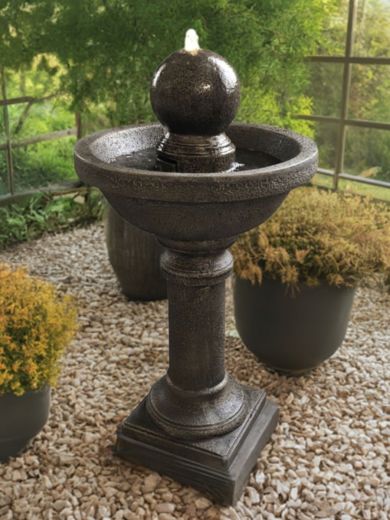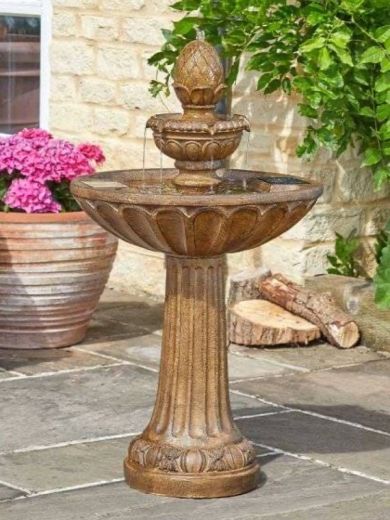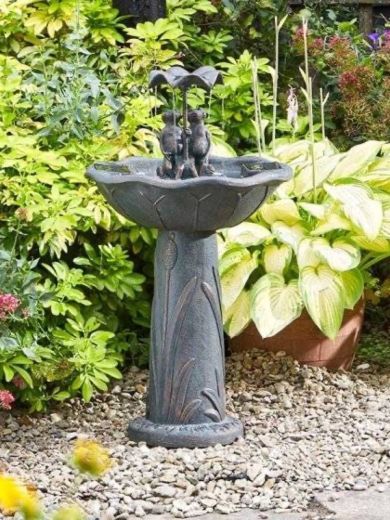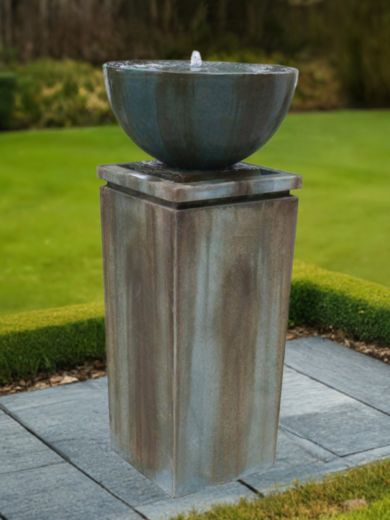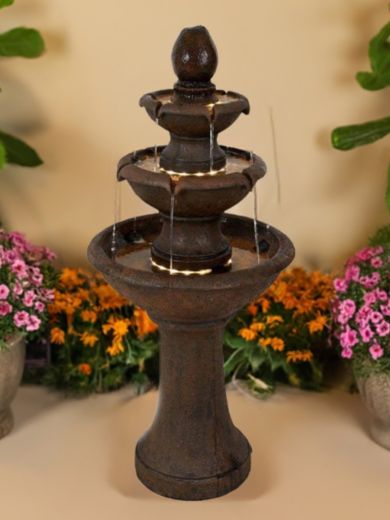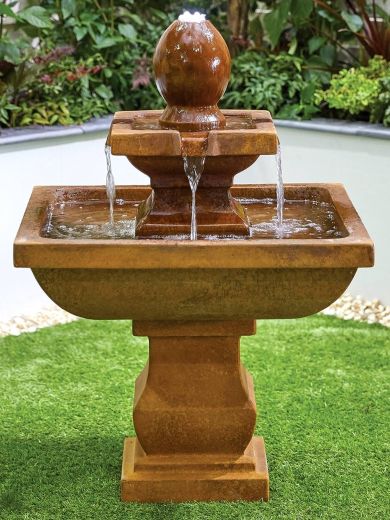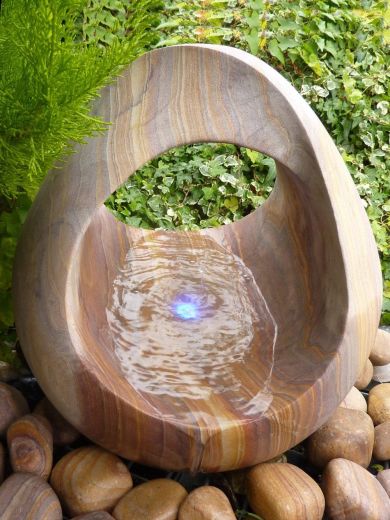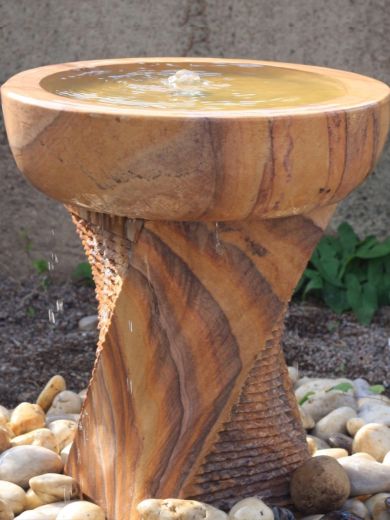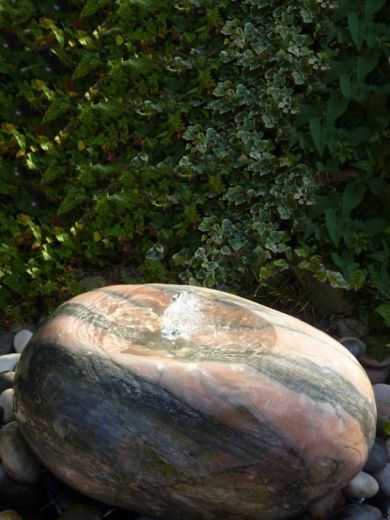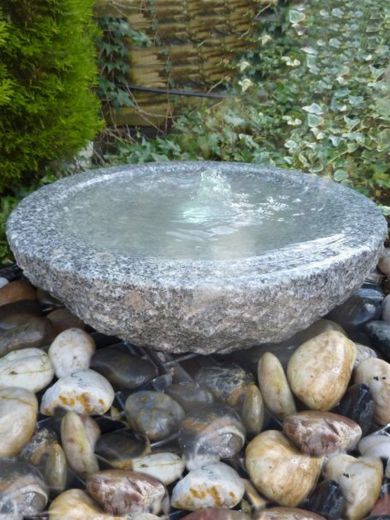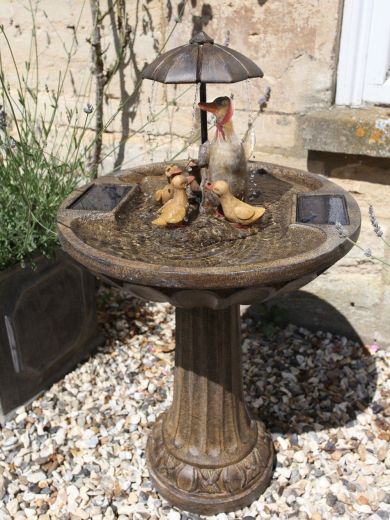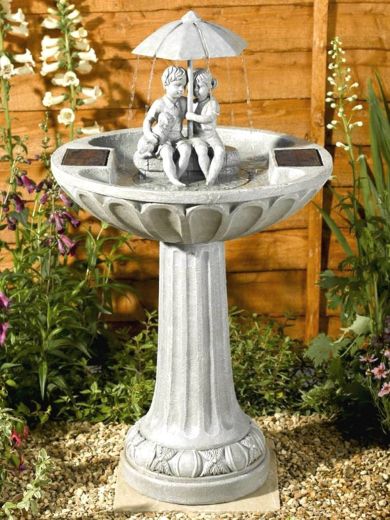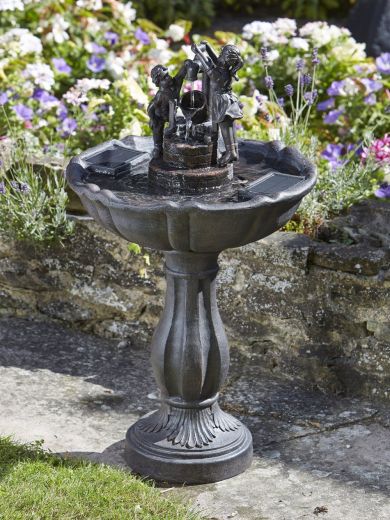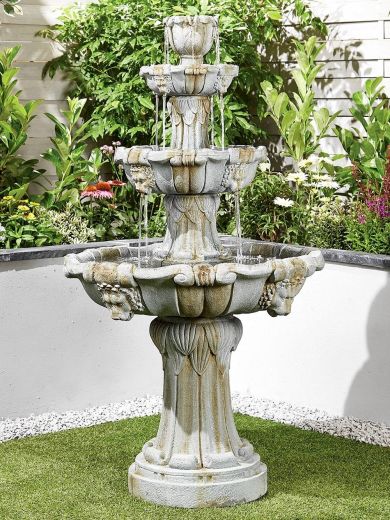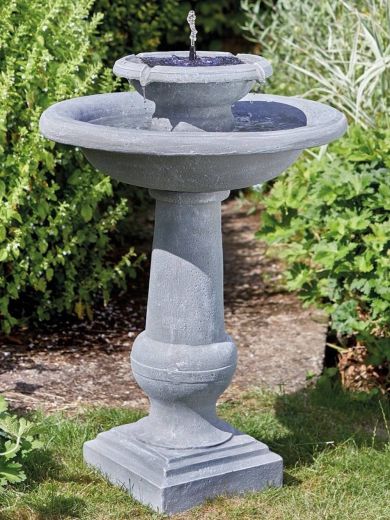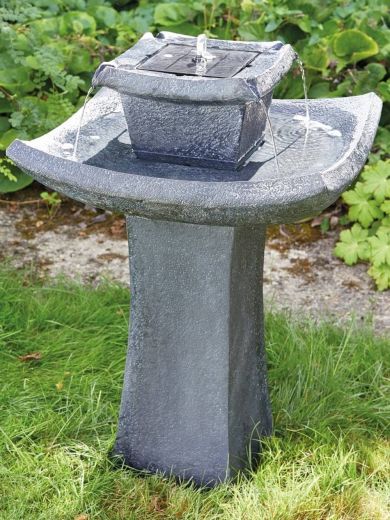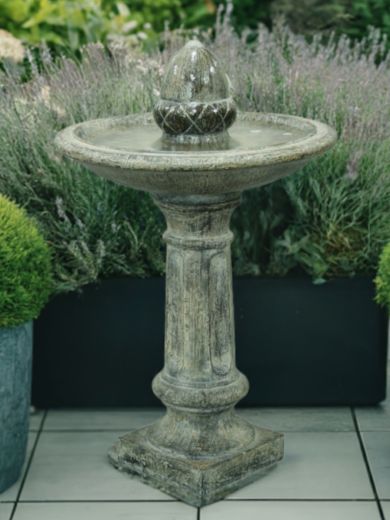The Ultimate Guide to Bird Baths: How to Attract More Birds and Enhance Your Garden
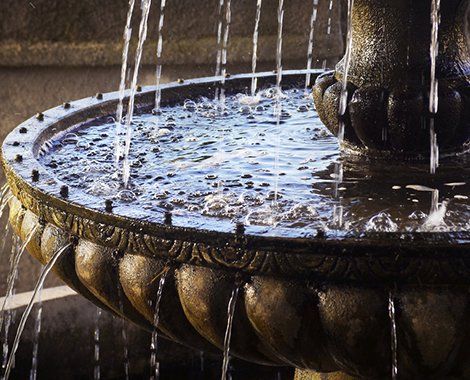 Bird baths are a fantastic way to attract wildlife to your garden, provide hydration for local birds, and add a charming element to your outdoor space. Whether you’re an avid birdwatcher or just looking to enhance the aesthetic of your garden, a bird bath can be a wonderful addition. In this guide, we’ll explore the importance of bird baths, the types available, and how to set up a bird bath that will not only look great but also help you create a welcoming haven for birds.
Bird baths are a fantastic way to attract wildlife to your garden, provide hydration for local birds, and add a charming element to your outdoor space. Whether you’re an avid birdwatcher or just looking to enhance the aesthetic of your garden, a bird bath can be a wonderful addition. In this guide, we’ll explore the importance of bird baths, the types available, and how to set up a bird bath that will not only look great but also help you create a welcoming haven for birds.
Why Bird Baths Are Essential for Birds
Birds, like all creatures, need access to water for survival. While they primarily rely on food sources, they also need water to drink and bathe. A bird bath provides both. Here’s why they’re essential:
1. Hydration: Birds need clean water to drink, especially during hot weather or dry spells.
2. Bathing: Bathing helps birds keep their feathers in top condition. Clean feathers are crucial for insulation and flight.
3. Attracting Birds: Offering a water source is a surefire way to attract a variety of bird species to your garden.
4. Habitat Enhancement: Bird baths improve your garden’s ecosystem by offering another habitat element, alongside plants and feeders.
Benefits of a Bird Bath in Your Garden
Adding a bird bath to your outdoor space comes with several benefits:
- Enhanced Garden Aesthetic: Bird baths come in various styles, from simple stone designs to ornate sculptures. They can serve as a beautiful focal point in your garden.
- Birdwatching Opportunities: A bird bath allows you to enjoy nature right from your window or garden. Watch different species bathe and interact with the water.
- Supporting Local Wildlife: Offering a water source encourages local bird populations to thrive, especially in urban or suburban areas where natural resources may be scarce.
- Natural Pest Control: Birds that frequent your bath can help reduce insect populations, including mosquitoes, which can be a nuisance in the warmer months.
Types of Bird Baths
Bird baths come in a variety of materials, styles, and designs. Here are the most common types:
1. Freestanding Bird Baths
Freestanding bird baths are often made of concrete, ceramic, or metal and are designed to stand on their own. These are the most common type and come in a wide range of designs, from classic pedestal styles to modern, minimalist looks.
2. Hanging Bird Baths
These bird baths are suspended from a tree branch or a hook. They're ideal for gardens where space is limited. Hanging bird baths are typically smaller and can be made from glass, ceramic, or metal.
3. Ground Bird Baths
Ground bird baths are placed directly on the soil or grass, providing a more natural, low-profile option. These baths are often designed to blend in with the garden's landscape, and they are particularly useful for birds that prefer to bathe closer to the ground.
4. Solar Bird Baths
Solar-powered bird baths feature built-in solar panels that power a small fountain, creating a gentle water movement. The sound of running water can attract more birds and adds a relaxing element to your garden.
5. Mosaic or Decorative Bird Baths
These bird baths are often works of art. Made with ceramic or stone, they feature intricate designs or vibrant colors that add personality to your garden. While these baths are eye-catching, they also function effectively for birds to drink and bathe.
6. Heated Bird Baths
In colder climates, a heated bird bath is a great way to ensure that birds have access to water year-round. These baths come with built-in heating elements that prevent the water from freezing during winter months.
How to Set Up a Bird Bath
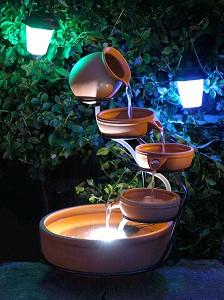 Setting up the perfect bird bath involves more than just placing it in your garden. Here’s a step-by-step guide to ensuring your bird bath is an attractive, functional, and safe space for birds.
Setting up the perfect bird bath involves more than just placing it in your garden. Here’s a step-by-step guide to ensuring your bird bath is an attractive, functional, and safe space for birds.
1. Choose the Right Location
Place your bird bath in a quiet area of your garden, away from heavy foot traffic. Ideally, it should be located near bushes or trees to give birds a safe space to perch and survey the surroundings. Avoid placing it too close to cat-prone areas, as predators can pose a threat to visiting birds.
2. Keep the Water Shallow
Birds prefer shallow water, ideally no deeper than 2–3 inches (5–7 cm). Water that’s too deep can deter birds, especially smaller species. You can add pebbles or stones to the bottom of the bath to create a gradual slope for easy access.
3. Ensure Clean Water
Birds are attracted to clean water. Change the water regularly, especially during warm weather when algae can quickly build up. Cleaning your bird bath with a non-toxic solution (such as vinegar and water) will prevent harmful bacteria from accumulating and ensure the health of the visiting birds.
4. Add Movement to the Water
Birds are often more attracted to moving water. If you can, choose a bird bath with a small fountain or add a solar-powered water pump to create gentle ripples. The sound of running water is not only appealing to birds but also adds an element of tranquility to your garden.
5. Ensure Safety
Keep the area around your bird bath safe by avoiding sharp edges and hazardous materials. Place your bird bath on stable ground so it doesn't tip over, and ensure it’s securely positioned, especially in windy conditions.
6. Positioning for Year-Round Use
To ensure that your bird bath is useful throughout the year, consider purchasing a heated bird bath if you live in a colder climate. If not, make sure the bath is positioned so it receives sunlight in the winter, helping to prevent freezing.
What Birds Visit a Bird Bath?
A well-placed bird bath can attract a variety of species. The types of birds that will visit your bath depend on your location, the time of year, and the food sources you offer in your garden. Common visitors include:
- Songbirds: Such as robins, sparrows, and finches.
- Hummingbirds: Particularly attracted to moving water and sunny spots.
- Woodpeckers: Will use a bird bath to bathe and drink.
- Doves and Pigeons: Prefer shallow, ground-level bird baths.
- Waterfowl: In larger gardens or ponds, ducks and geese may also frequent bird baths.
Tips for Attracting More Birds to Your Bird Bath
1. Offer a Variety of Food: Complement your bird bath with bird feeders filled with seeds, suet, and fruits. The combination of food and water will attract more species.
2. Add Plants: Native plants around your bird bath can provide shelter and food for birds.
3. Avoid Chemicals: Do not use pesticides or herbicides around your bird bath. Birds can ingest these harmful chemicals when they drink or bathe.
Conclusion: Create a Bird-Friendly Oasis
A bird bath is an easy, rewarding way to support local wildlife, beautify your garden, and enjoy nature right outside your window. By choosing the right type, maintaining clean water, and setting up a safe and attractive space, you’ll be able to create an inviting oasis for birds of all kinds. Not only will you help sustain local bird populations, but you’ll also create a peaceful environment where you can enjoy the sights and sounds of nature.
Investing in a bird bath is an investment in your garden’s ecosystem. Whether you’re new to birdwatching or a seasoned enthusiast, the presence of a bird bath will bring a touch of nature’s magic right into your Garden. By following these guidelines and focusing on the essentials, you can optimize your bird bath setup to attract more birds and create a serene, nature-filled space. Whether you opt for a simple dish or a decorative fountain, you’ll enjoy the beauty and benefits of a bird-friendly garden for years to come. Why not visit our Bird Bath product page for more inspiration!

